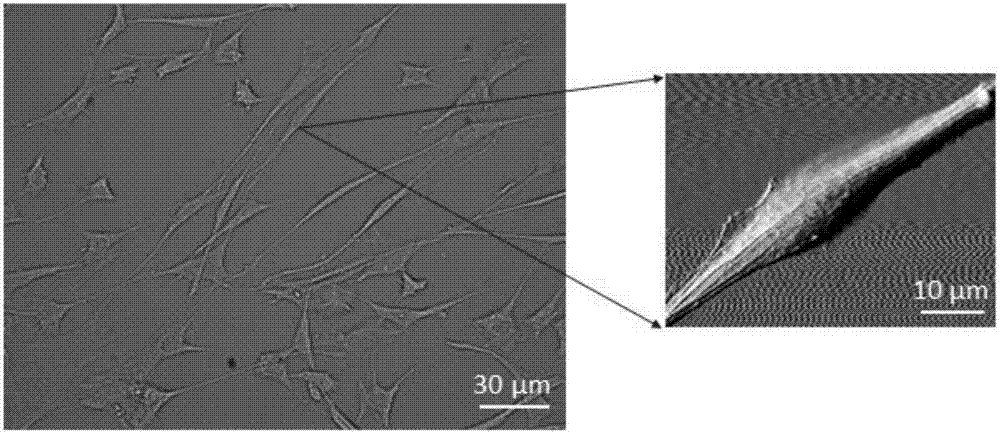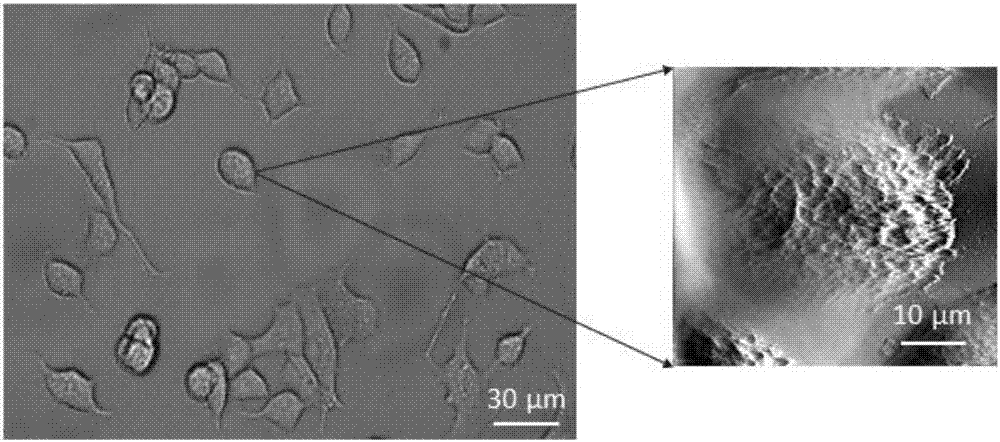Method for obtaining action mechanism of nanometer probe and single cell
A Nanoprobe, Mechanism of Action Technology, Applied in Atomic Force Microscopy and Cell Mechanics
- Summary
- Abstract
- Description
- Claims
- Application Information
AI Technical Summary
Problems solved by technology
Method used
Image
Examples
Embodiment Construction
[0029] 1. Culture method of human skin fibroblasts (Fibroblasts referred to as "FB") and breast cancer cells (MCF-7)
[0030] FB and MCF-7 were each cultured in a 35mm diameter petri dish, the culture medium was DMEM / HIGH GIUCOSE and 10% fetal bovine serum (FBS), and the cells were cultured at 37°C, 5% CO 2 incubator for at least 24 hours. figure 1 Topography of individual fibroblasts obtained for human skin fibroblasts in a Petri dish and atomic force microscopy. figure 2 Topography of a single breast cancer cell obtained for breast cancer cells in a petri dish and atomic force microscopy.
[0031] 2. AFM experiment and parameter design
[0032] In order to illustrate the universality of this method, two kinds of cells, fibroblasts ( figure 1 ) and breast cancer cells ( figure 2 ); two shapes of probes were selected, the commercial pyramid-shaped silicon nitride tip ( image 3 (a)) and focused ion beam (FIB) processed SiN nano-needles ( image 3 (b)). Three sets of e...
PUM
 Login to View More
Login to View More Abstract
Description
Claims
Application Information
 Login to View More
Login to View More - R&D
- Intellectual Property
- Life Sciences
- Materials
- Tech Scout
- Unparalleled Data Quality
- Higher Quality Content
- 60% Fewer Hallucinations
Browse by: Latest US Patents, China's latest patents, Technical Efficacy Thesaurus, Application Domain, Technology Topic, Popular Technical Reports.
© 2025 PatSnap. All rights reserved.Legal|Privacy policy|Modern Slavery Act Transparency Statement|Sitemap|About US| Contact US: help@patsnap.com



